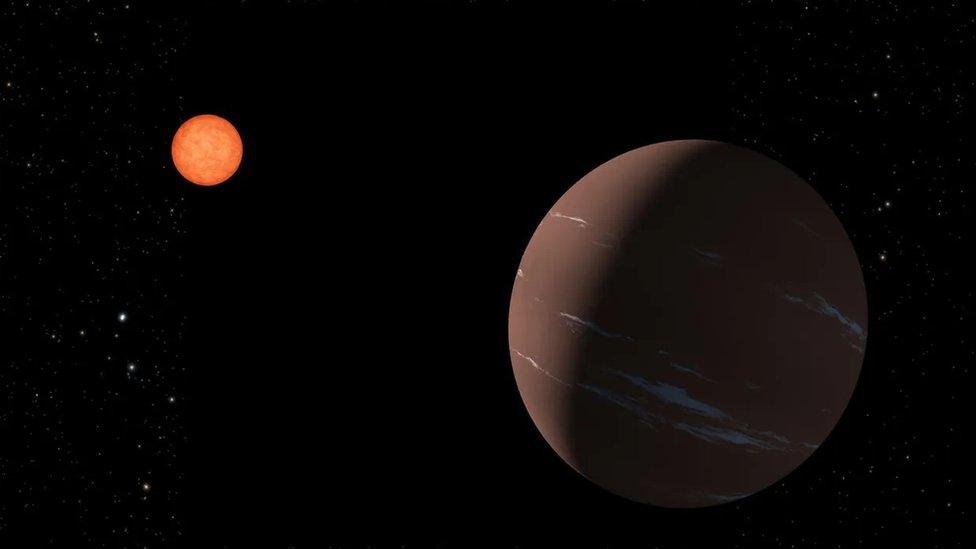Astronomers discover new 'Super Earth' planet
- Published

Ever dreamed of what life could be like on another planet?
From the chilly temperatures of Neptune to the acidic surface of Venus, building a home on another planet other than Earth is no easy feat.
Astronomers believe they might have discovered a planet similar to our own, and it's not that far away - by space standards.
This "Super-Earth" orbits a red star only 137 light-years away, and has been snappily titled TOI-715 b. Rolls off the tongue, doesn't it?
Kepler-452b is a famous planet sometimes called Earth 2.0 because of its similarities to our own planet
Nasa describes Super-Earths as planets that are "more massive than Earth" but smaller than ice giants like Neptune and Uranus.
There are thought to be 1679 confirmed Super-Earths discovered, to date.
A study published in the Monthly Notices of the Royal Astronomical Society says that TOI-715 b orbits its star at a distance which means it could have the right conditions for water to exist.
And, as luck would have it, a second smaller planet with similar conditions is thought to exist in the same system.
If you cannot see the quiz, click here.
Both planets orbit a red dwarf star - that's a star that is cooler and smaller than our own.
This means that planets can cluster together closer to the star and maintain temperatures cool enough to have water form on their surface.
Nasa says that these kinds of stars are "the best bet for finding habitable planets" - planets where life could exist.
In the future the TOI-715 b will be examined by the James Webb telescope, to help scientists understand more about its atmosphere and size.
- Published24 July 2015
- Published3 October 2014
- Published28 August 2023
